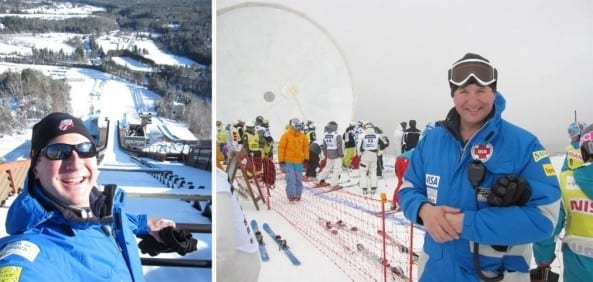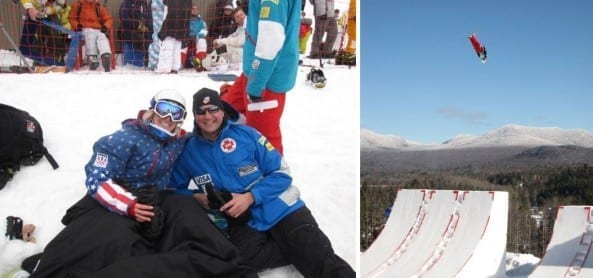A decade ago, Phillip Arnold, D.O.’01, served on the base camp team that helped the first and only blind man to reach the top of Mount Everest. It’s been a wild ride ever since.

He’s bunked eight to a room with members of the U.S. Ski Team, as team physician. He’s taken care of ski teams and trekking expeditions in Chile, France, Italy, Austria and Tanzania as well as around the United States.
And when he isn’t doing any of that, Arnold treats patients of all ages in Door County, WI, as the local hospital’s attending physician and sports medicine director, medical director of a nursing home and a volunteer physician at a free clinic. A clinical assistant professor at the University of Wisconsin and the Virginia College of Osteopathic Medicine, he also staffs local marathons and high school athletic events.
So when Arnold says, “I believe I have the best job on the planet,” you might ask: Which one?
The general answer is helping patients, athletic superheroes and average humans alike, to stay active, healthy and injury-free.
“I got into this because of my love of the outdoors and sports medicine,” says Arnold, who spent four years ski-bumming between his undergraduate years and medical school. While in Bozeman, MT, he met Steve Gipe, D.O., an emergency medical doctor who worked in search and rescue missions and extreme climbing expeditions. Years later, Gipe called Arnold to invite him to join the medical team for Erik Weihenmayer, a blind athlete, during the National Federationfor the Blind Everest Expedition in 2001. Arnold leapt at the chance even though he was a fourth-year DMU student and had to pay his own way to Nepal.
His adventures snowballed from there. During the expedition, he met Jeff Evans, a physician assistant and founder of Mountain Vision Inc., an international trekking company; Arnold eventually joined its medical teams on treks to Machu Picchu in Peru’s Andes Mountains and to Mount Kilimanjaro, Tanzania.
“Covering an expedition is a lot of fun but very challenging,” he says. “Getting to know the group members’ health histories, strengths and weaknesses is probably most important. You need to bring the right equipment and extra supplies, make local contacts and have evacuation plans.”
And sometimes you need to be creative. One team member fell victim to posterior nosebleed, one of many high-altitude conditions. “He used up all the team’s sponges and rhino rockets. We had to hit up the ladies,” Arnold recalls, showing a photo of the man with a tampon shoved up his nose.
In 2008, Arnold got a phone call from Gunnar Brolinson, D.O., associate professor and sports medicine chair at the Virginia College of Osteopathic Medicine, where Arnold completed his sports medicine fellowship. Brolinson was scheduled to join the U.S. Ski Team’s medical staff for the 2008 World Cup, but, due to his heavy research load, could Arnold go in his place? Five weeks later, the young doctor found himself stuck in a snowstorm with the freestyle team on a mountain pass near Lake Como, Italy. He was in heaven.
“Working with the ski team has been one of the great things in my career,” says Arnold, who’s since served as its physician six more times. “The people are fun. You get to see some amazing jumps and travel the world.”

He’s also seen – and treated –some breathtaking disasters. At a campus presentation last fall, he showed a brutal video clip of U.S. Ski Team member Scott Macartney wiping out on the icy downhill event going 87 miles an hour. Miraculously, he broke no bones but was kept in a chemically induced coma for two days. Equally miraculously, the skier made the U.S. team the very next year.
“These are super-competitive athletes. You have to be a little off to do that,” Arnold says.
Ski team physicians are volunteers who pay their own expenses in addition to taking time away from their practices. They have to take the four-day Mountain Emergencies in Skiing and Snowboarding (MESS) course every three years. Still, Arnold is hooked.
“You get to practice the art of medicine, not having any labs immediately available and trusting what you know,” he says. “And the coaches and athletes are some of the nicest people you’ll ever meet.”

